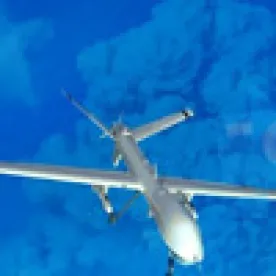With the latest round of approvals, the Federal Aviation Administration (FAA) has granted over 100 Section 333 Exemptions allowing businesses to begin using small unmanned aircraft systems (UAS) for a variety of purposes. The 29 exemptions most recently granted bring the total number of exemptions to 128 and include companies that will use UAS for aerial photography and surveying, precision agriculture, construction and infrastructure inspection, pipeline surveys, insurance claims, motion picture and television filming, real estate photography, education, and research and development purposes. Included among the latest approvals is an exemption authorizing outdoor R&D in connection with Amazon.com’s proposed Prime Air delivery service. This approval is in addition to the Experimental Airworthiness Certificate the FAA previously granted for related purposes.
As the FAA continues to work through the hundreds of pending requests for exemptions under the existing regulatory framework, the UAS industry and interested users and other stakeholders continue to submit comments in connection with the FAA’s ongoing rulemaking related to commercial use of small UAS (Docket ID: FAA-2015-0150). According to the FAA’s website, more than 2,600 comments have been received representing a wide range of opinions both for and against the proposed rules, with many commenters offering suggestions on how the draft rules should be modified to include available technologies that would permit broader use of UAS in a variety of applications. Two issues that show-up in many of the comments focus on the proposed rules’ requirements that the UAS remain in visual line of sight (VLOS) of the operator at all times and not be flown over persons not involved in the UAS operations. Many commenters note that these two requirements will significantly limit the operations and beneficial uses of UAS, and propose instead that the FAA allow use of various flight control and see-and-avoid technologies that will address the safety concerns underlying these aspects of the proposed rules.
As the April 24, 2015 deadline for comments on the proposed rules approaches, UAS manufacturers and potential users should use this opportunity to submit comments to help shape the rules so as to permit both broad and safe use of this emerging technology. The FAA’s stated goal is to issue the final rules for small UAS within 16 months of the original Notice of Proposed Rulemaking, which would result in final rules in late-2016 or possibly early-2017. In the interim, it is clear that a growing number of companies are moving ahead with their UAS operations consistent with the existing regulatory framework. The FAA’s recent efforts to streamline the exemption process may help accommodate preliminary integration of UAS into the national airspace and facilitate the development of a body of experience that will help further improve the UAS regulatory framework.




 />i
/>i

